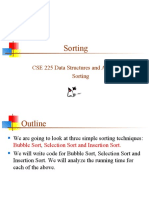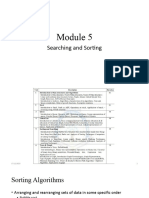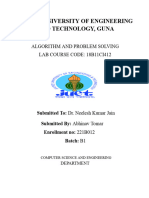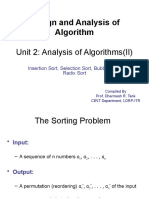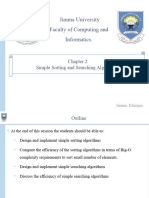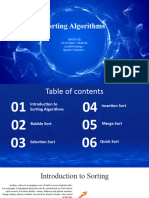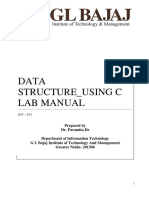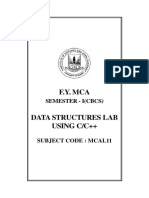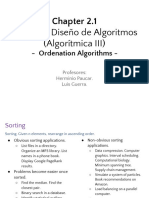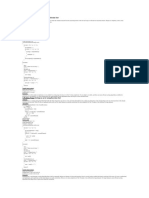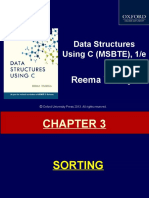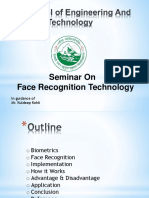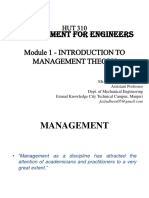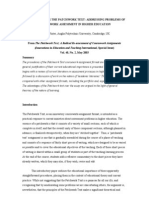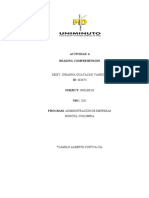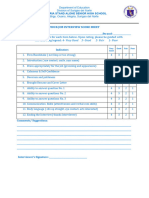0% found this document useful (0 votes)
65 views3 pagesAssignment 1 Algo.
Name: Mennatullah Magdy Mahmoud Mostafa Elnashar
ID: 20201378920
This document contains an assignment with 4 questions. Question 1 involves showing that an equation is theta of another function. Question 2 shows that another equation is not theta of a function. Question 3 calculates the time taken to sort a reversed sorted array of 1 million elements using bubble sort and merge sort on a computer with a speed of 106 million instructions per second. Question 4 proves the correctness of the bubble sort algorithm.
Uploaded by
MennaCopyright
© © All Rights Reserved
We take content rights seriously. If you suspect this is your content, claim it here.
Available Formats
Download as DOCX, PDF, TXT or read online on Scribd
0% found this document useful (0 votes)
65 views3 pagesAssignment 1 Algo.
Name: Mennatullah Magdy Mahmoud Mostafa Elnashar
ID: 20201378920
This document contains an assignment with 4 questions. Question 1 involves showing that an equation is theta of another function. Question 2 shows that another equation is not theta of a function. Question 3 calculates the time taken to sort a reversed sorted array of 1 million elements using bubble sort and merge sort on a computer with a speed of 106 million instructions per second. Question 4 proves the correctness of the bubble sort algorithm.
Uploaded by
MennaCopyright
© © All Rights Reserved
We take content rights seriously. If you suspect this is your content, claim it here.
Available Formats
Download as DOCX, PDF, TXT or read online on Scribd
/ 3






